
Seeing the City: Avant-Garde Visions of New York from the Film-Makers' Cooperative Collection and Beyond
Films
- Read More
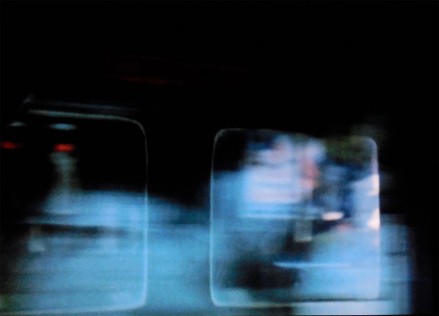 Experimental
ExperimentalThe Wonder Ring
Stan Brakhage16mm, color, silent, 4 minRental format: 16mm - Read More
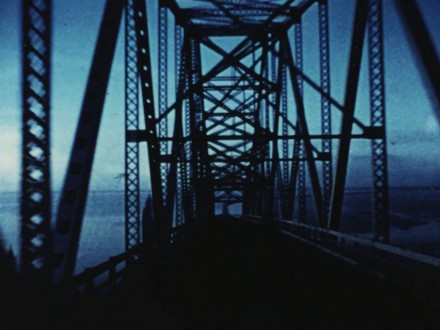 Experimental
ExperimentalBridges-Go-Round
Shirley Clarke16mm, color, sound, 7.5 minRental formats: 16mm, Digital file - Read More
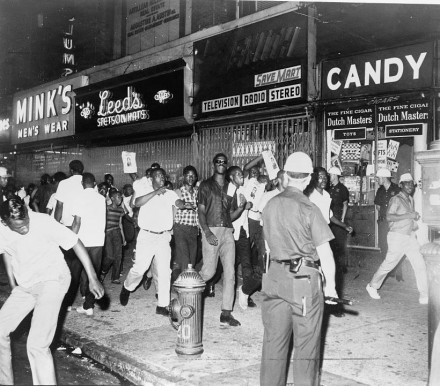 Experimental
ExperimentalCrowds
David Devenskydigital, color and b/w, silent, 38 min - Read More
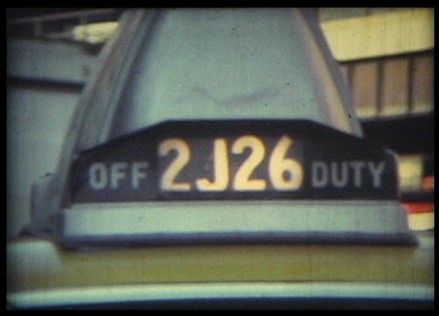 DocumentaryExperimental
DocumentaryExperimentalTaxi, Taxi
Bill Crestoncolor, soundRental format: Digital file - Read More
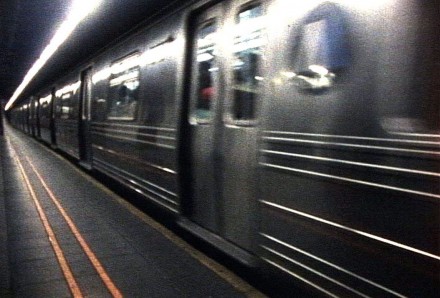 Experimental
ExperimentalDerail
Catalina SantamariaDigital File, color and b/w, sound, 7.23 minRental format: Digital file - Read More
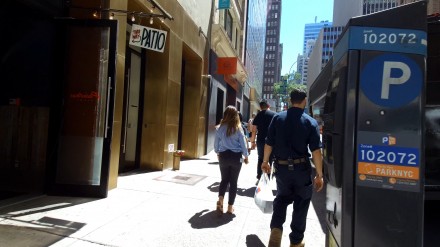 ExperimentalInstallation
ExperimentalInstallationNew York Gradual
Gregg BiermannDigital File, color, sound, 14.24 minRental format: Digital file - Read More
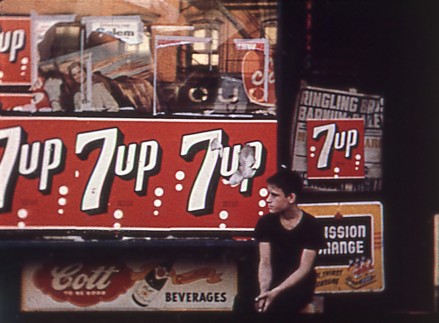 DocumentaryExperimental
DocumentaryExperimentalEastside Summer
Rudolph Burckhardt16mm, color, sound, 11.5 minRental format: 16mm - Read More
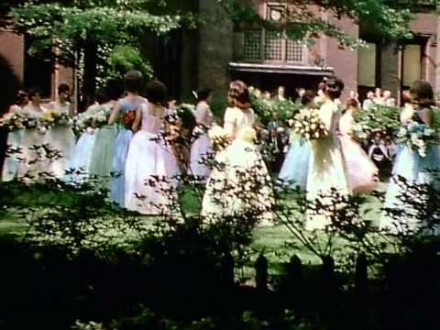 Experimental
ExperimentalGo Go Go
Marie Menken16mm, color, silent, 11.5 minRental format: 16mm - Read More
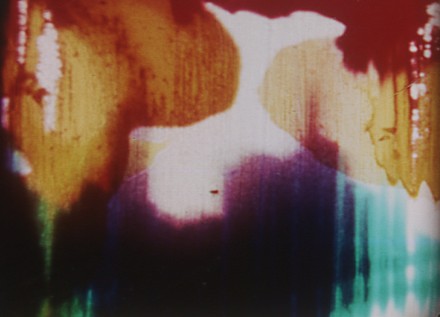 Experimental
ExperimentalThe Burning of New York
Mike Jacobson16mm, color, silent, 8 minRental format: 16mm - Read More
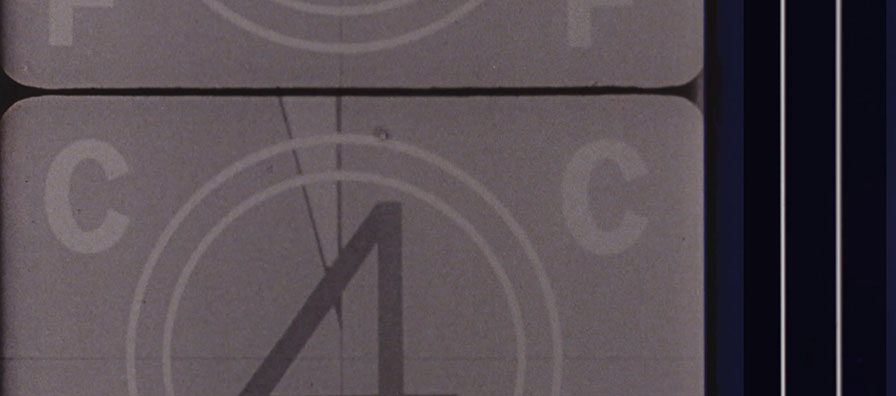 Experimental
ExperimentalNo York City
Rick Lisscolor, sound, 6 minRental format: DVD NTSC - Read More
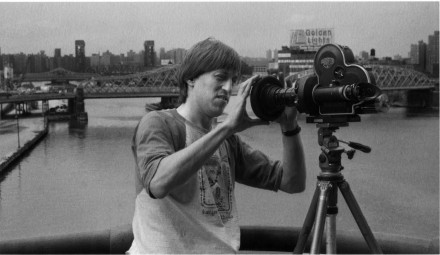 Experimental
ExperimentalConcern For The City
Peter Von Ziegesar16mm, color, sound, 30 minRental format: 16mm - Read More
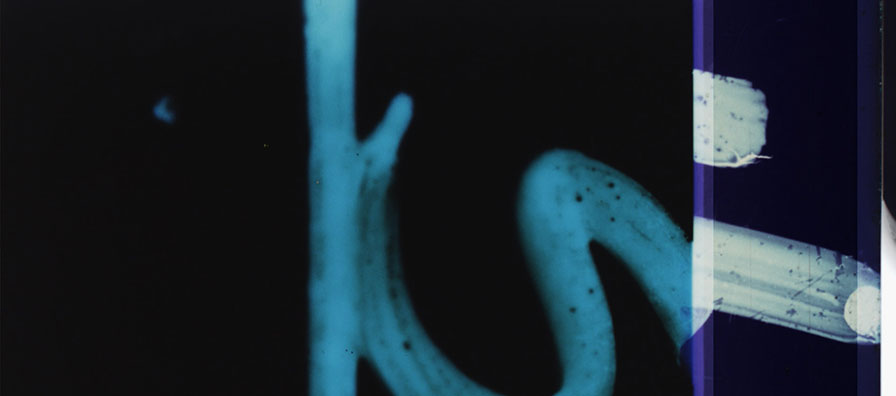
Dream City
Steve Siegel16mm, color, sound, 27 min - Read More
 Experimental
ExperimentalFrom The Ladies
Holly Fisher16mm, color, sound, 20 minRental format: 16mm - Read More
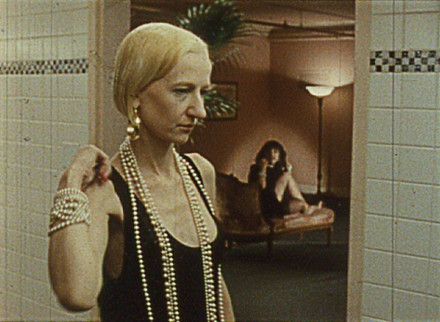 Experimental
ExperimentalGreed: Pay To Play
Bette Gordon16mm, color, sound, 20 minRental format: 16mm - Read More
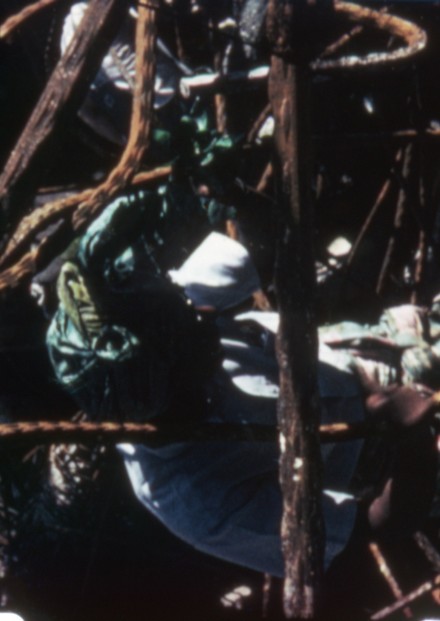 Experimental
ExperimentalScotch Tape
Jack Smith16mm, color, sound, 3 minRental format: 16mm - Read More
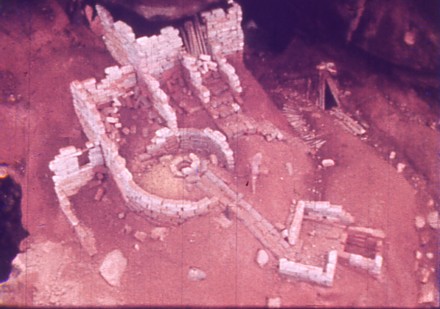 DocumentaryExperimental
DocumentaryExperimentalDwellings
Rudolph Burckhardt16mm, color, sound, 12.25 minRental format: 16mm - Read More
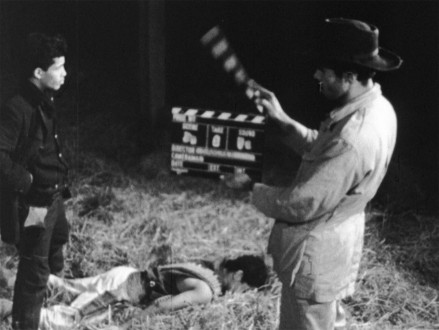 Documentary
DocumentaryFilm Club
Jaime Barrios16mm, black and white, sound, 26 minRental format: 16mm - Read More
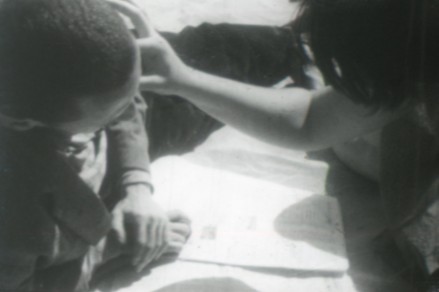 Experimental
ExperimentalGrandma's House Original Version
Bob Fleischner16mm, black and white, sound, 24.25 minRental format: 16mm - Read More
 DocumentaryExperimental
DocumentaryExperimentalConey Island
Peter Cramersuper8, color, sound, 12 minRental format: DVD NTSC - Read More
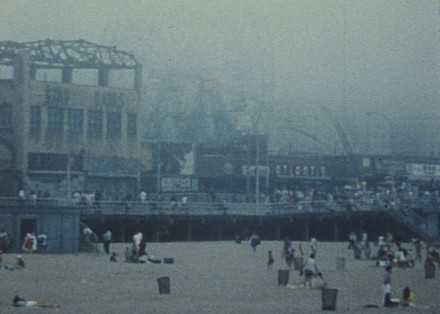 DocumentaryExperimental
DocumentaryExperimentalSodom By the Sea
Harriet Hirshorn16mm, color, sound, 17 minRental format: 16mm - Read More
 DocumentaryExperimentalInstallation
DocumentaryExperimentalInstallationRicki Ticki
Sarah Friedlandcolor, sound, 6 minRental format: Digital file - Read More
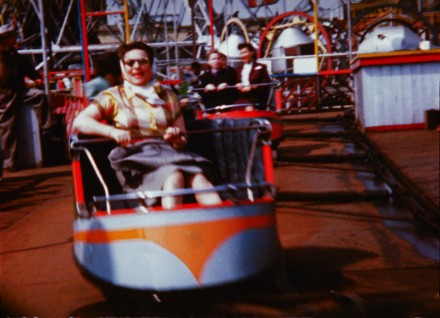 DocumentaryExperimentalNarrativeInstallation
DocumentaryExperimentalNarrativeInstallationThe Coney Island Amateur Psychoanalytic Society’s Dream Films
Zoe BeloffDigital File, color and b/w, silent and sound, 40 minRental format: Digital file - Read More
 Experimental
ExperimentalExcursion
Marie Menken16mm, color, silent, 5.13 minRental format: 16mm - Read More
 Experimental
ExperimentalSnapshots of the City
Stan Vanderbeek16mm, black and white, sound, 5 minRental format: 16mm - Read More
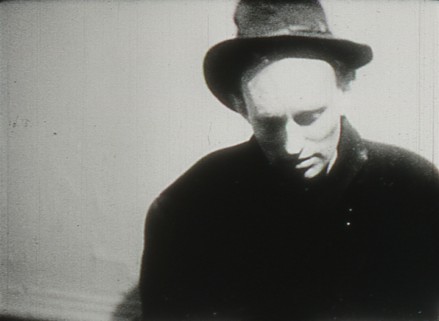 Experimental
ExperimentalStore Days I and II
Raymond Saroff16mm, black and white, silent, 14.15 minRental format: 16mm - Read More
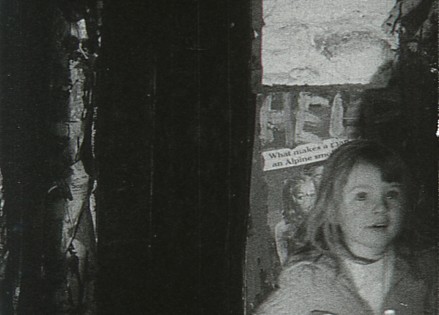 Experimental
ExperimentalDoomshow
Ray Wisniewski16mm, black and white, sound, 10 minRental format: 16mm - Read More
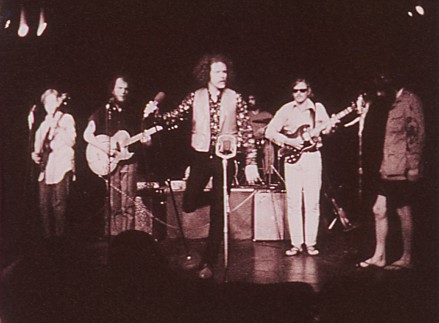 Experimental
ExperimentalFugs: Sights and Sounds of the Lower East Side
Edward English16mm, color, sound, 12.5 minRental format: 16mm - Read More
 Documentary
DocumentaryThis is Not a Demonstration
Jaime Barrios16mm, color, sound, 8 minRental format: 16mm - Read More
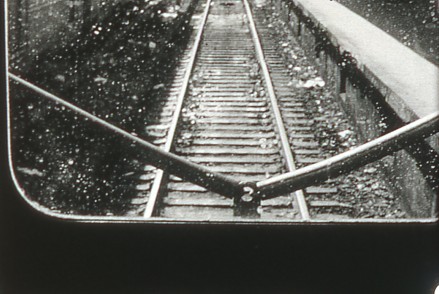 Experimental
ExperimentalPlaces
Marjorie Heins16mm, black and white, sound, 7.5 minRental format: 16mm
Description
Film at Lincoln Center and The Film-Makers’ Cooperative present "Seeing the City: Avant-Garde Visions of New York from The Film-Makers’ Cooperative Collection and Beyond," to be presented at FLC from May 3rd–7th, 2024. The series will feature a selection of films from the Film-Makers’ Cooperative catalog, and elsewhere, that paint a unique portrait of the city, with many presented on 16mm.
An iconic, oftentimes cliched, cinematic setting for hundreds of films, New York has regularly played a starring role in the history of cinema. Narrative films set in New York City are almost a subgenre unto themselves and have received copious attention. Less well explored are visions of the city anchored in exploration, experimentation, and subversive political commitment. This set of programs offers a diverse and engaging introduction to some of the scores of films in The Film-Makers' Cooperative’s collection (and beyond) that explore the city. From the lyrical evocations of the anonymity of the crowd and mass transit, and a clutch of visionary works examining the built environment, to sets of films exploring housing, the lurking shadow of ever-encroaching gentrification, and works on specific areas of the city, this selection gives an alternative vision of one of the most filmed and photographed metropolises on earth.
Organized by Tom Day and Dan Sullivan. Tom Day would like to thank the entire Film-Makers’ Cooperative team, especially interns Hayley Aaskow, Chris Stoddard, and Lucy Talbot Allen.
***
This series also included the films:
- WeeGee’s New York, Arthur ‘Weegee’ Felig, 1948, 16mm, 21 minutes
- Daybreak Express, D.A. Pennebaker, 1953, 5 minutes
- Jazz of Lights, Ian Hugo, 1954, 16 minutes
- N.Y, N.Y., Francis Thompson, 1957, 15 minutes
- Skyscraper, Shirley Clarke, 1959, 21 minutes
- What Is the City but the People?, John Peer Nugent, Gordon Hyatt, 1969, 50 minutes
- Break and Enter a.k.a Squatters / Rompiendo Puertas, Newsreel, 1971, 40 minutes
- Garbage, Newsreel, 1968, 10 minutes
- Where Can I Live — A Story of Gentrification, Erik Lewis, 1983, 33 minutes
- The Heart of Loisaida, Beni Matías, Marci Reaven, 1979, 26 minutes
- Housing Court, Beni Matías, William Sarokin, 1985, 30 minutes
- Simpson Street, William Sarokin, 1979, 23 minutes
- Here at the Water’s Edge, Leo Hurwitz, Charles Pratt, 1962, 60 minutes
- City Wildlife: Mice, Rats, Roaches, Christy Rupp, 1980, 16 minutes
***
Moving through the Metropolis: Transit Images (Program 1)
The rapid rise of mass transit and urban populations in the late 19th and early 20th century saw tectonic shifts occur in New York City. Between 1900 and 1930 the population of the five boroughs doubled to nearly 7 million inhabitants, all vying for places to work and live—and means of transportation to get to and fro. The opening and rapid rise of the Subway system in 1905 (not to mention the tentative arrival of the automobile) gave mass transit a privileged relationship to the nascent and still-forming technology of cinema. Since its inception film has sought to explore, document, and emulate the spectacle, effect, and sensations of vehicular transportation, and this is especially true in New York City. The dominant subject of these films, as one might imagine, is the train, with elevated and underground journeys quickly becoming a common subject for experimental filmmakers and artists. Each mode is represented here, but the program also goes beyond the railway tracks to explore the infrastructure of New York’s bridges and taxi cabs, and the pleasures, frustrations, and poetics of finding one’s way on foot amongst a throng of other New Yorkers.
- The Wonder Ring, Stan Brakhage, 1955, 16mm, 4 minutes
- Bridges Go Round, Shirley Clarke, 1958, 16mm, 8 minutes
- Crowds, David Devensky, 1967, 38 minutes
- Taxi, Taxi, Bill Creston, 1977, 14 minutes
- Derail, Catalina Santamaria, 1997, 7 minutes
- New York Gradual, Gregg Bierman, 2018, 14 minutes
The Postwar City Symphony, Part 1 (Program 2)
A close cousin to the transit film, New York city symphonies have a storied and well considered history. A cornerstone genre of experimental film, the city symphony was born in Europe and linked strongly to Modernism. The works took a day-in-the-life framing of an urban space, offering a panoramic view of the city’s buildings, citizens, and the machinations of its quotidian activities (classic examples include Berlin: Symphony of a Great City [1927] and Rain [1929]). City symphonies of this period are as much interested in the content they depict as in expanding and exploring the possibilities of film language. The two programs gathered under the moniker here account for the breadth and dynamism of the mode with the city’s environs explored from a wide array of perspectives. Here the dizzying verticality of Manhattan is articulated and abstracted in films by Francis Thompson and Ian Hugo; the pace of city life is rendered with forceful, hypnotic speed by Marie Menken and D.A. Pennebaker; Rudy Burckhardt tours us through the streets and fashions of Manhattan’s East Side denizens with color-saturated and Thelonious Monk-soundtracked aplomb; and Arthur ‘Weegee’ Felig takes us across the Brooklyn Bridge down to Coney Island and all around the rest of the city with characteristic gusto and verve.
- WeeGee’s New York, Arthur ‘Weegee’ Felig, 1948, 16mm, 21 minutes
- Daybreak Express, D.A. Pennebaker, 1953, 5 minutes
- Jazz of Lights, Ian Hugo, 1954, 16 minutes
- N.Y, N.Y., Francis Thompson, 1957, 15 minutes
- Eastside Summer, Rudy Burckhardt, 1959, 16mm, 12 minutes
- Go Go Go, Marie Menken, 1964, 16mm, 12 minutes
The Postwar City Symphony, Part 2 (Program 3)
Beyond the aestheticism and pure technical and perceptual adventurousness of films in “The Postwar City Symphony, Part 1,” the films in Part 2 use the city symphony mode as a means to explore more cerebral topics. The specter of environmental crisis and urban pollution hovers over the saturated and evocative imagery of Michael Jacobson’s hand-painted and starched-upon The Burning of New York, while the political realities of inequity flood the sound and image tracks of Steven Siegel’s Dream City. Rick Liss’s film N.Y.C. (No York City) is soundtracked by Laurie Anderson with a pulsating electronic beat that keeps the film’s vigorous tempo. This otherworldly tone is also present in the marriage of sound and image in Peter Von Ziegesar’s Concern for The City. These works usher in a new era for the city symphony—no longer bound by pulsating jazz scores and the surface textures of the built environment, they appear duty-bound to explore and opine on the changing metropolis in terms and contexts that remain prescient today.
- The Burning of New York, Michael Jacobson, 1967, 16mm, 8 minutes
- N.Y.C. (No York City), Rick Liss, 1983, 6 minutes
- Concern for the City, Peter Von Ziegesar, 1982, 16mm, 30 minutes
- Dream City, Steven Siegel, 1986, 16mm, 27 minutes
Architecture and Gendered Space (Program 4)
The centrality of skyscraper architecture to the mythos of New York is almost tautological. So is the association of these great feats of engineering with gendered labor: hubristic, great male builders who carved up space, tamed land, and reoriented the city to become an environment predicated on hulking verticality. This program offers three films that undercut and explore the gender politics of such built environments. Shirley Clarke, a co-founder of The Film-Makers’ Cooperative, was commissioned to make Skyscraper by a raft of construction and building material firms. It documents the erecting of 666 Fifth Avenue, commonly known as the Tishman Building, designed by Carson & Lundin and built for its developer Tishman Realty and Construction from 1955 to 1957. The storied office building was categorized by Susan Sontag as an example of kitsch in arts and design, and in a similar tone Clarke described her film as a “musical comedy about the building of a skyscraper.” Clarke’s designation is confirmed by the film’s jaunty, lightly mocking soundtrack, comprised of whimsical songs and fabricated dialogue that skews the gender makeup of the construction crew, the bureaucracy involved in the building’s planning and creation, and the homogeneity of the architectural style the team is laboring toward.
Accompanying Clarke’s work are two films set inside the public restrooms of skyscrapers. Filmed in the multiple-mirrored women’s powder room of the city’s then-only Holiday Inn, Holly Fisher’s film From the Ladies is a subtle, deconstructive work that makes strange the quotidian perceptual experience of visiting a gendered space clearly designed by a man. Fisher later described the location and her experience filming there as “a space designed exclusively for me (being a woman), which seemed simultaneously seductive and vulgar, and in which the most visible object was myself looking at myself with Bolex in hand. Looking at From the Ladies is an orchestration of tensions from this play between myself as filmmaker-subject, object, and woman. Filmmaker at play with the gaze, so to speak.” Bearing the hallmarks of her feature-length work, a thriller-inflected feminist unpacking of film genre, Bette Gordon’s Greed: Pay to Play, similarly set in a hotel bathroom, offers semi-narrative, surrealist-tinged psychodrama in the tradition of the midcentury avant-garde. Gordon has written of the film: “Three women have a strange claustrophobic encounter in the ladies lounge of a luxurious Manhattan hotel. Set in a timeless ‘twilight zone’ where objects bear a menacing aura and seemingly harmless conversation carries a threatening subtext.”
- Skyscraper, Shirley Clarke, 1959, 21 minutes
- From the Ladies, Holly Fisher, 1978, 16mm, 20 minutes
- Greed: Pay to Play, Bette Gordon, 1987, 16mm, 20 minutes
Gentrification and Urban Renewal, Part 1 (Program 5)
Perpetual change—an unending cycle of destruction, rebuilding, and re-zoning—might be the one constant of New York City. The most consequential period of upheaval was felt in the 1960s, with major declines in manufacturing and manual labor drastically altering the demographics of New York, landlord disinvestment in response to political uprisings, and “slum clearance” enacted as part of late Robert Moses-era civic improvement projects. By the late 1960s, an estimated 29,654 families had been displaced by urban renewal projects across the city, in particular the neighborhoods of San Juan Hill, East Harlem, and Bedford-Stuyvesant. “Urban renewal,” the author James Baldwin famously remarked, “means negro removal,” while The Congress for African Peoples defined it as “another arm of white supremacy.”
In 1969 the Department of City Planning attempted to shore up support for its various projects with a multipronged, multimedia public relations blitz. At its center was the publication of a six-volume book, The Plan for New York City (1969), which articulated the commissioner’s vision for the metropolis to stem the flight of the middle classes to the suburbs and revitalize urban space. The plan was presented in synopsis form as a propagandistic documentary produced by the Department and co-directed by John Peer Nugent and Gordon Hyatt. Featuring some flashy cinematography from New York location shooter -extraordinaire Arthur J. Orniz, What Is the City but the People? is an idiosyncratic document of the city in the late 1960s, offering a wide panorama of places and spaces, narrated by one of the plan’s ghost writers, William H. Whyte. The film flits between footage of and discussion about “urban crisis” (uprisings, poor housing stock, street violence) and purported city-led remedies. Viewed today, the film is both a curious relic of failed urban policy and an index of just how wedded city authorities were (and remain) to the idea that the manipulation of public perception is key to urban governance.
Between 1961 and 1968 the number of abandoned buildings in the city went from 1,000 to 7,100, with many of these properties having once housed minority families. One of two films in this series, Break and Enter by the collective Newsreel depicts the liberatory potential of taking advantage of this scene of urban decline. As the group proclaimed: “By 1970, several hundred Puerto Rican and Dominican families reclaimed housing left vacant by the city. They pulled the boards off the doors, cleaned and repaired the buildings, and moved in. Break and Enter documents the activist work of Operation Move-In and the city’s attempts to displace the families.” The film is of a piece with Newsreel’s rough-hewn style and its off-the-cuff verisimilitude is in every way a formal contrast to the official line being fed by the city government.
- What Is the City but the People?, John Peer Nugent, Gordon Hyatt, 1969, 50 minutes
- Break and Enter a.k.a Squatters / Rompiendo Puertas, Newsreel, 1971, 40 minutes
Gentrification and Urban Renewal, Part 2 (Program 6)
The second program of films gathered under “Gentrification and Urban Renewal” encompasses more works that document political, cultural, and personal reactions to the crises wrought by urban and socioeconomic flux. Jack Smith’s early work Scotch Tape (one of only two films deemed complete by the artist, along with his signature Flaming Creatures [1963]) is an anarchic and playful three-minute film that anticipates his later work through its collision of mugging performance, rubble-strewn mise-en-scène and willful embrace of fantastically oddball technical limitations. Shot among piles of debris on what was Manhattan’s San Juan Hill (and would soon become Lincoln Center), the film embraces the idiom of creative destruction that would characterize Smith’s peripatetic film and theater work.
Similarly concerned with this process but from a different vantage point is Newsreel’s Garbage, raw documentation of the action-oriented activist group Up Against The Wall Motherfucker, who are shown debating and then enacting the political stunt of transporting and dumping piles of trash found strewn on the streets of the Lower East Side into the recently opened Lincoln Center fountain. Beyond direct action, Rudy Burckhardt’s portrait of sculptor Charles Simonds transports us to a utopia wherein Simonds subtly reorients our relationship to the built environment through the creation of “Dwellings,” tiny handcrafted towns with homes for an imaginary civilization of “Little People” who are migrating through the streets of cities throughout the world. Simonds’s sculptures can still be found in various locales around the world (including inside and across the street from the Breuer Building on Madison Avenue). The program closes with a more direct and didactically forceful examination of the relentless pace of gentrification in a rapidly changing Park Slope: Erik Lewis’s Where Can I Live — A Story of Gentrification follows local residents’ resistance to the tide of rent hikes and evictions that follows what urban historian Suleiman Osman has called “the invention of Brownstone Brooklyn,” the gradual colonizing of diverse, predominantly working-class Victorian-era neighborhoods into firmly middle-class enclaves throughout the 1970s and 1980s.
- Scotch Tape, Jack Smith, 1959, 16mm, 5 minutes
- Garbage, Newsreel, 1968, 10 minutes
- Dwellings, Charles Simonds, Rudy Burckhardt, 1974, 16mm, 13 minutes
- Where Can I Live — A Story of Gentrification, Erik Lewis, 1983, 33 minutes
On the Loisaida and the Streets of the South Bronx (Program 7)
The tall buildings and bustling streets of Midtown Manhattan have often drawn the eye of experimental filmmakers looking to explode the perceptual capabilities of cinema. Beyond these locales and explorations of cinematic form there is a strong tradition of radical nonfiction and advocacy in alternative New York cinema that reaches beyond commercial zones. These films are often tied to issues of pressing importance to working-class and immigrant communities in areas beyond the business and leisure districts of Manhattan. Two fecund arenas explored in this mode of committed filmmaking are the Nuyorican Loisaida and the South Bronx, areas that have been treated in narrow and stereotypical ways throughout mainstream film history. This set of films conveys both the dynamism of these spaces—as in the work of Jaime Barrios, documenting his storefront Film Club, a teaching space and micro cinema set up in the early 1960s—but also the harsh political realities of dealing with the bureaucracy of municipal government. A strong throughline that unites the films are issues of housing and displacement, especially the will of grassroots activism and sweat equity to remake and repopulate parts of the city that have been deemed unusable and uninhabitable by city authorities.
- Film Club, Jaime Barrios, 1968, 16mm, 26 minutes
- The Heart of Loisaida, Beni Matías, Marci Reaven, 1979, 26 minutes
- Housing Court, Beni Matías, William Sarokin, 1985, 30 minutes
- Simpson Street, William Sarokin, 1979, 23 minutes
Off to the Beach: Coney Island (Program 8)
Called “America’s Playground,” “The Poor Man’s Paradise,” “Sodom by the Sea,” or simply and most aptly “Dreamland,” Coney Island has been, for 150 years, the mythic-iconic, fever-dream stage-setting of summer vacation. Sprung up along the rough edge of the working-class immigrant communities of South Brooklyn, Coney Island is both the prototypical, all-American amusement park, packed with dazzling lights and sky-high thrill rides, soft ice cream, and hot dogs, as well as a seedy site of titillating and transforming encounters with the sexual, forbidden, and “other”—under the circus tents at the freak show, on stage at the striptease, cruising beneath the boardwalk, or groping in the darkness on the Tunnel of Love. Though burned to the ground on half a dozen occasions and marked by periods of neglect, Coney Island and its singular power of attraction have endured, and have remained a favorite muse for generations of the city’s artists and filmmakers. These short works selected from The Film-Makers’ Cooperative archive depict Coney Island from the 1920s to the present, tracing the history of its boom-and-bust cycle of decay and rebirth, and capturing its unique visual vocabulary of hand-painted carny banners, fantastical architecture, and glowing neon signage. But most importantly (and intriguingly), they explore Coney Island’s emotional and psychological resonance as one of America’s truly mythic territories: “the Coney Island of the mind,” a dreamland that invokes childhood, memory, and desire. This program was curated by Philomena Mattes.
- Grandma’s House, Bob Fleischner, 1965, 24 minutes
- Coney Island, Peter Cramer, 1987, 13 minutes
- Sodom by the Sea, Harriet Hirshorn and Mary Patierno, 1989, 17 minutes
- Ricki Ticki, Sarah Ema Friedland, 2012, 6 minutes
- Selections from The Coney Island Amateur Psychoanalytic Society’s Dream Films, Zoe Beloff, 2009, 17 minutes
Nature and Nonhuman Animals (Program 9)
The rise of New York as a major urban center since its colonization has seen a number of animals play significant roles in tandem with the expansion of the city, conventionally framed as pests and hindrances to sanitary living environments. Christy Rupp’s video City Wildlife: Mice, Rats, Roaches is a playful essay on our most common nonhuman animal friends. Produced by Chris Post and Peter Von Zeigesar, the film advocates a more ecology-centric vision of city-dwelling animals, seeing them as intrinsic to the function of the natural world of New York. “Rats are not terrorists,” Rupp told the New York Post, “[they] are not inherently evil. They’re just animals like any other animals. They don’t come into the world meaning to harm man. I see them as part of the history of ecology, in the whole chain of things. It’s just that they’re out of control in the cities.” The video is composed of a number of short, tableau-like vignettes charting historical and biological facts through voice-over while we observe mice and rats chowing down on Big Macs, rats posed in front of outraged Post headlines, and the training of rats in bomb detection.
Complementing Rupp’s video essay are two contrasting visions of Manhattan as a geographic and topological form, as an island and as a natural harbor. The waterfronts of New York are toured at breakneck speed through Marie Menken’s short Excursions, while its beachfronts and shorelines get a poetic and decidedly political treatment in Here at the Water’s Edge, an exploration of Manhattan’s man-made and natural relation to the great waters that border it. Leo Hurwitz’s collaboration with photographer Charles Pratt offers a collage of sights and sounds, a richly textured evocation of the city’s past and present where the impact of the human hand is rendered both audible and visible.
- Here at the Water’s Edge, Leo Hurwitz, Charles Pratt, 1962, 60 minutes
- Excursion, Marie Menken, 1968, 16mm, 5 minutes
- City Wildlife: Mice, Rats, Roaches, Christy Rupp, 1980, 16 minutes
Downtown Counternarratives (Program 10)
A firm highlight of The Film-Makers’ Cooperative’s collection is the sheer number of works that partake in, document, and celebrate the other arts. This selection of films roams across the 1960s to explore a variety of novel activities emerging from the world of avant-garde art in New York during this period. Beginning with a brace of evocative documents of Pop Art and Happenings pioneer Claes Oldenburg’s storefront and Judson Church performances, we also dive into the activities of the antinuclear NO!art Movement in Doomshow, which follows the deinstallation of a raucous, ephemeral show of sculptural installations. Edward English made a number of films about the outer reaches of the popular and experimental music revolutions taking place in the city during the 1960s, and his film about poet, musician, publisher, and all-round avant-garde impresario Ed Sanders and his protopunk rock outfit The Fugs, Fugs: Sights and Sounds of the Lower East Side Rain Forest, captures the band during the burgeoning days of NYC hippiedom.
Cut from a similar cloth is Chilean filmmaker Jaime Barrios’s personal look at Enrique Vargas’s Guerilla Theater, This Is Not a Demonstration. Concluding this program is a virtually unseen short experimental documentary by Marjorie Heins, Places, which strikes an ethnographic tone undercut by a searing and indignant political anger. Places is best described through Heins’s own words: “A call to overthrow the existing social structure in the form of a montage of New York’s Lower East Side, subways, bridges, and Fifth Avenue ruling-class glitter. Included is some wistful footage of a farmhouse in Trumansburg, New York. A soundtrack of selections from the World Almanac—statistics of Welfare, U.S. corporate profits, territorial conquests, etc.—produces an extremely jarring effect.”
- Snapshots of the City, Stan VanDerBeek, 1960, 6 minutes
- Store Days I and II, Raymond Saroff, 1961, 16mm, 14 minutes
- Doomshow, Ray Wisinski, 1960, 16mm, 10 minutes
- Fugs: Sights and Sounds of the Lower East Side Rain Forest, Edward English, 1966, 16mm, 13 minutes
- This Is Not a Demonstration, Jaime Barrios, 1969, 16mm, 8 minutes
- Places, Marjorie Heins, 1969, 16mm, 8 minutes